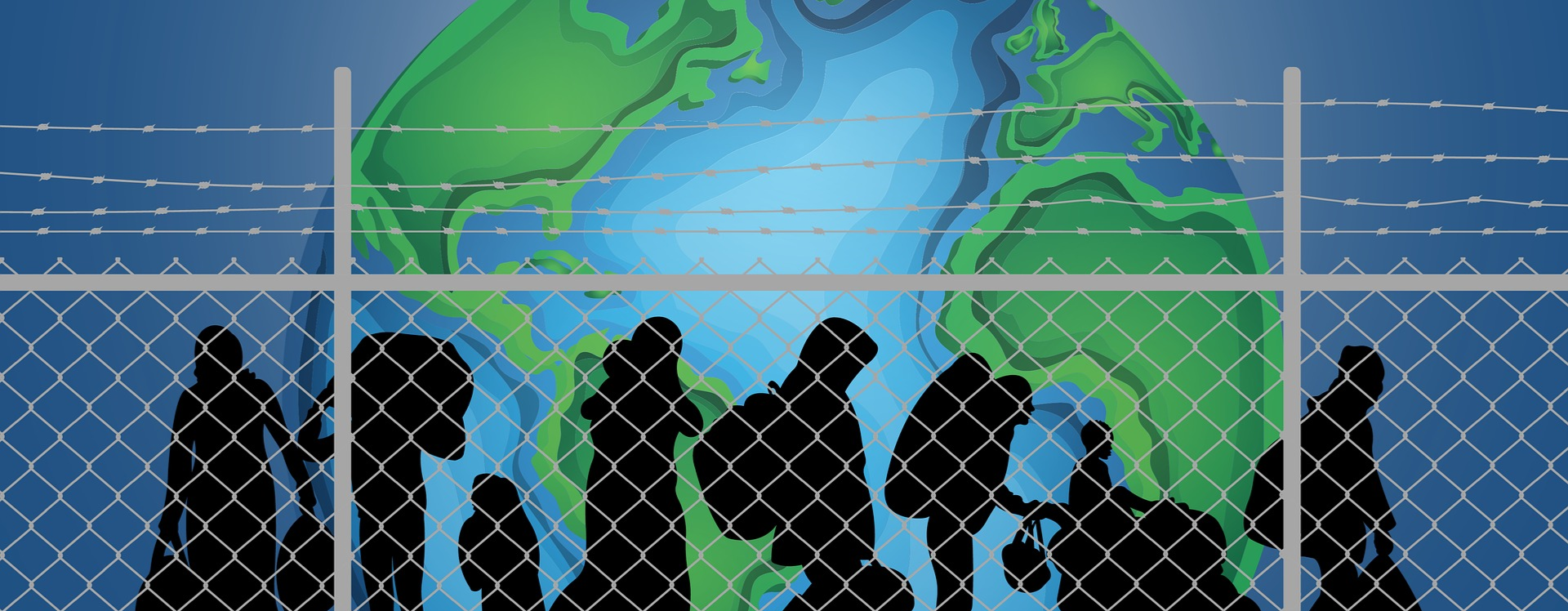A future of large-scale migration

Unprecedented migration based on several push and pull factors will reshape global demographics and economies by mid-century.
It seems almost inevitable that the future will see large-scale migration on a level not previously seen in several generations, possibly centuries. It won’t happen next year or the year thereafter, but it will steadily ramp up such that by mid-century, we are likely to have hundreds of thousands of people globally on the move annually.
Large-scale migration will happen because of the push effect from climate change and lack of opportunity in regions such as Africa and the Middle East as well as the pull effect from declining populations and demand for labour in diverse countries such as Germany, China, Russia, Poland, Japan and South Korea.
The push effect of climate change is readily evident in regions that include some of the poorest countries globally, such as the Horn of Africa and West Africa. But it's not only a more hostile natural environment that will lead people to seek greener pastures, it is also a lack of opportunity. Detailed work on the long-term future of Africa indicates that growth requirements of upward of 15% per annum are required to achieve the goal of ending extreme poverty in Africa before mid-century. Only China and the Asian Tigers managed sustained rates of growth that approached a much more modest 10% per annum. In an era of slow growth globally, Africa’s prospects are unlikely to approach even these rates. The result in Africa will be many economies with a surplus of educated persons but with limited formal sector employment opportunities.
Large-scale migration will happen because of the push effect from climate change and lack of opportunity
As we examine in our long-term forecasts of employment, the implication is that a very large portion of Africans will survive in the informal economy and remain poorer than in most other regions, although their situation will steadily improve. They will inevitably search for opportunities abroad — and it is likely that they will, eventually, push against an open door, an increased demand for labour elsewhere. This will happen even as African governments work hard to create employment opportunities, constrain outward migration and grow their economies.
The pull effect will be provided by the declining populations of regions such as Europe with its high standards of living, freedom and infrastructure. Already, in 2022, Europe had six million vacant jobs and this year the population numbers of 29 countries — including Finland, South Korea, Germany, Russia, Japan and Ukraine — are in absolute decline. Technology can compensate for the associated decline in the size of the labour force as a percentage of the total population, but artificial intelligence does not cut hair, run the garbage truck and look after the elderly.
The pull effect of labour shortages in rich countries in Europe and elsewhere will eventually create an unstoppable momentum. Consider, for example, that the population of the EU that are 65 years and older, is currently at 112 million, roughly 22% of the total population. By 2050 it will have increased to 142 million (30% of the total population). No amount of investment in hard borders and associated efforts to halt the millions of people searching for better livelihoods will succeed in the face of the great sucking effect created by the need to care for the elderly and to compensate for a reduction in Europe’s labour force from its current 251 million to 228 million. The challenges with hard border control are readily evident in the extent to which countries such as the US, Italy, Spain and others struggle to contain the current trickle.
By 2050 the populations of 64 countries will be in an annual decline, including China where the decline starts in two years' time, in 2026. Arranged from the slowest to the most rapid rate of decline in population size in 2050 the list consists of Bahrain, Micronesia, Brazil, Bahamas, Granada, Viet Nam, Brunei, Belgium, Guyana, Azerbaijan, Czechoslovakia, Chile, El Salvador, France, Singapore, Seychelles, Uruguay, Finland, Austria, the Netherlands, St Vincent and the Grenadines, Kosovo, North Korea, Moldova, Trinidad and Tobago, St Lucia, Slovenia, Armenia, Sri Lanka, Barbados, Russia, Malta, Georgia, Slovakia, Mauritius, Hungary, Romania, China, Portugal, Estonia, Thailand, Greece, Poland, Spain, Cuba, Hong Kong, Jamaica, Italy, Belarus, Latvia, North Macedonia, Lithuania, Bosnia and Herzegovina, Japan, Croatia, Serbia, Albania, Bulgaria, Taiwan, South Korea, Ukraine, Puerto Rico and UAE.
By the end of the century, the number of countries with declining populations will have more than doubled to 147 out of 188 countries in our database, including India (from around 2057) and the USA (from around 2082).
Most of the countries that will still experience a population increase by 2100 will be in Africa, with a few possible outliers such as Canada and Australia (due to high rates of expected inward migration), and a poor country such as Afghanistan with its tenaciously high fertility rate. The only countries with large populations that will still increase would be Nigeria (then the fourth-largest population globally) and DR Congo (sixth-largest population globally).
The world will have to consider the ramifications of these changes and design appropriate strategies. In the short and medium term, before the labour shortages in destination countries become acute, the increased migrant flows will polarise electorates and energise nationalist and nativist movements as we already see in the US, Germany, the UK, France, Sweden and elsewhere.
Eventually, in those countries with declining populations that are unable to attract migrants, rural and urban areas will be scarcely populated with low or no demand for additional housing. Employers will struggle to recruit staff. The consequences of these trends in authoritarian countries such as China, North Korea and Russia are less clear and more likely to contribute to economic stagnation and eventually regression. Those richer, democratic countries that attract large-scale migration, on the other hand, will struggle with cultural matters including social tensions if migrants are not well-integrated. On the other end of the equation, large outflows of skilled and semi-skilled persons could also affect the economies of the sender countries, the effect of a brain drain that is already decimating the health profession of Nigeria and Ghana, for example.
By 2100, population growth will predominantly occur in Africa, while migration challenges will polarise and impact global societies and economies
In previous centuries, when large-scale migration occurred, such as from many European countries to the US, an entire logistic value chain was established to legally process and manage the flows. It is quite likely that, eventually, we will see the same, this time reverse flows from Africa. Instead of hardening border protection, African and Western governments should negotiate bilateral agreements where the former supply skilled workers to Europe as part of formal, government-to-government arrangements. This can help Europe to meet its skills gaps while African governments gain funds to train and educate more people. For this reason, the World Bank encourages strategic migration management by making labour migration an explicit part of the development strategy in migration-origin countries, while governments in destination countries need to match migrants’ skills and attributes with their labour needs.
The alternative, migration as part of organised crime, is simply too ghastly to contemplate.
Image: RosZie/Pixabay






